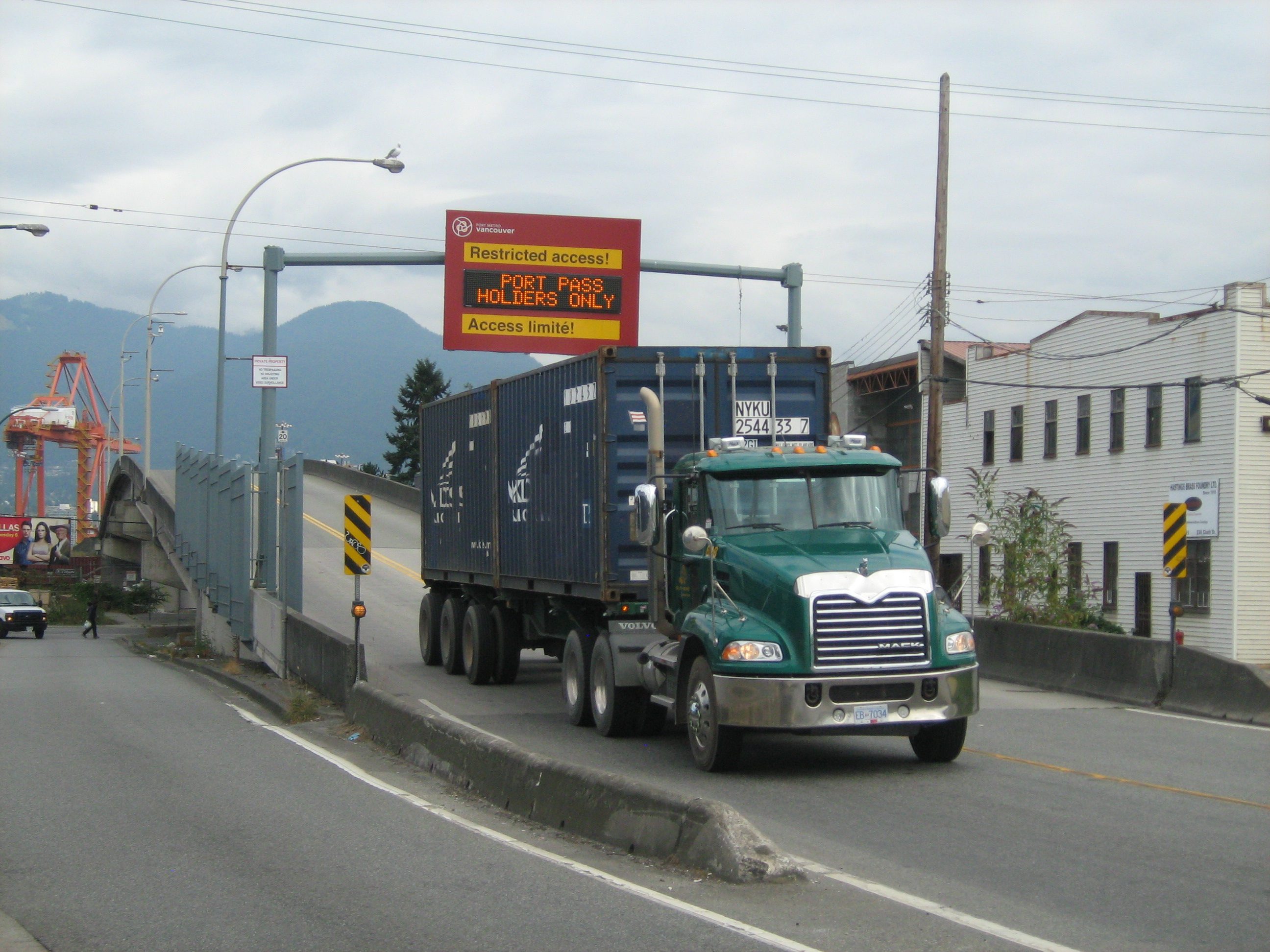The topic of port trucking strikes has generated considerable interest from freight shippers. The Surface Annual Transportation Annual Review survey results revealed that problems at marine container terminals and in the drayage sector have impacted perceptions of logistics service quality and their ability to serve the needs of those who rely on global supply chains. The withdrawals of service by port truckers in 1999, 2005 and 2014 are the most visible manifestations of problems with container operations at Port Metro Vancouver (PMV). However, Vancouver is not the only port where trucking problems have occurred.
Truckers’ actions at the ports of New York and New Jersey also resulted in disruptions in February 2014. Truckers staged similar actions at Georgia Port Authority’s Garden City Terminal and the Port of Oakland in November 2013, and at the Port of Seattle in 2012. Los Angeles and Long Beach are not immune from action by truckers in their port, with drivers going on strike in late April 2014. The disruption in Los Angeles is the third in the last year.
A high degree of public visibility and angst when container drayage service is withdrawn does not imply that a port trucking strike is the cause of the problem, nor does a return to work provide a clue as to whether there is a lasting solution. Darryl Anderson and Phil Davies in this June 2014 BC Shipping News article provide some perspective by exploring answers to the following questions: (a) What were the most significant factors that led to the truckers strike? (b) What items in the 15-point Joint Action Plan were most necessary for settling the strike? (c) What signs indicate that the agreement is working; or are there any lingering areas of concern? A further update on the topic was included in interviews Mr. Davies, and Mr. Anderson provided to in this December 2014 Wood Businesses article.
Gateway logistics performance and challenges arising from the Port Metro Vancouver drayage industry’s work stoppage in 2015 and the railway industry’s performance were widely felt across the various supply chains and are still lingering.
Port Metro Vancouver’s new licensing system will address some of the issues by balancing the number of registered trucks with the amount of available work. There are about 2,000 trucks servicing Port Metro Vancouver, but PMV is looking to reduce that number by 500 to 700. Instead of paying a $300 licensing fee to the port, truck operators now have to pay an annual company fee that starts at $35,000 for up to 15 trucks. That means some owners who own only one or two trucks may have to merge with others. The CBC reported that more than 80 small trucking companies say they’re on the verge of being put out of business by new reforms to the licensing fees at Port Metro Vancouver. The new fees stem from a truck driver strike last spring that crippled Port Metro Vancouver in the Spring of 2014. A January 26 article in the Province suggests a significant number of fewer trucks will available to support supply chain requirements as a result of the changes.
On December 21, 2014, CKNW reported that Unifor “was still having discussions with the federal and provincial government, but we had an overwhelming turnout today and a unanimous resolution that if we can’t get the joint action plan rates implemented that unanimously, they will go on strike if necessary. The Vancouver Sun reported on January 16, 2015, that truckers threaten more job action. Groups representing container truck drivers have given Transportation Minister Todd Stone until Jan. 29 to crack down on alleged non-compliance with the agreement they signed last March. An important question to consider is whether the changes in the Port Metro Vancouver Trucking Licensing System were done in a fair and equitable manner and did the changes address the root problem of the length of time a truck has to wait at a container port. Read the January 26, 2015, Port Metro Vancouver statement “Changes to port trucking needed for stability; program available to ease transition” and the February 2, 2015, Business in Vancouver article “Painfull trucker cull no guarantee of port productivity” where Wave Point Consulting team members provide additional industry insights.
With an anticipated increase in business activity in 2015 industry observers will be watching carefully to see if the service levels of all involved in the movement of container traffic (the railways, drayage companies, port authorities, marine terminals and transload centres) can keep pace with their requirements. However, two events are likely to shape the future. The first is the appointment of Andy Smith as the newly appointed trucking commissioner. The second is the perhaps unprecedented in the trucking industry, was that 26 companies representing over 500 experienced container truckers were granted a judicial review of Port Metro Vancouver’s decision to overhaul the Transport License System on February 19, 2015.
The editors of Business In Vancouver captured the heart of the matter in their February 10-16, 2015 article “Shifting gears in port truck trade”.The article stated, “Two bottom-line questions the new truck licensing system has yet to answer: will it increase the efficiency of containerized cargo movement through the port, and are there still too many licenses chasing too few containers.” With a record volume of containers going through PMV in 2014, perhaps it is the first question that remains outstanding.

